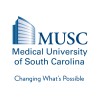
DLBS1033 for the Treatment of Acute Ischemic Stroke
Acute Ischemic StrokeThis is a prospective, randomized, double-blind, and controlled clinical study to investigate the effects of DLBS1033 in conjunction with standard therapy compared to standard therapy alone in acute ischemic stroke patients.

Biomarker Signature of Stroke Aetiology Study: The BIOSIGNAL-Study
StrokeAcuteThe three-year cumulative risk of a recurrent stroke, dependent on aetiology, is up to 25 per cent. At present, preventing recurrence relies on a broad approach to reduce risk factors associated with atherosclerosis, heart disease and metabolic disorders. However, more specific interventions, such as anticoagulation and surgery or stenting, need aetiologic information. BIOSIGNAL aims to determine where the most promising candidate biomarkers can help identify stroke aetiology and also predict overall MACE, including specifically recurrent stroke. In addition, the insights gained into the processes underlying different stroke subtypes may lead to more targeted diagnostic tools.

Second Enhanced Control of Hypertension and Thrombectomy Stroke Study (ENCHANTED2)
Acute Ischemic StrokeENCHANTED2 is an international, multicenter, prospective, randomised, open, blinded end-point assessed (PROBE) trial, to assess different approaches to manage blood pressure (BP) in acute ischemic stroke (AIS) patients who have undergone mechanical thrombectomy (MT). There are two nested substudies evaluating different approaches to secondary prevention in this high-risk stroke population.

Fall-recovery Training for Those With Chronic Stroke and Low Falls Self-efficacy
StrokeChronic stroke is the leading cause of long-term disability in the United States. Post-stroke health is negatively impacted by two interrelated factors-a substantial risk of falls and limited walking activity. The risk of falling is a barrier to walking activity, with falls self-efficacy mediating the relationship between impaired physical capacity and limited activity. The ability to recover from a fall (i.e. arrest a fall before impact) is a logical, yet untested rehabilitation target to enable walking activity through sustained benefits to falls self-efficacy. Our aim is to demonstrate that fall-recovery training is feasible in stroke survivors with low falls self-efficacy. Five participants will undergo an adapted version of fall-recovery training. We will gather evidence of the implementation, adaptation, and limited efficacy of this intervention in affecting falls self-efficacy and walking activity.

Cranial Electrical Stimulation (CES) as Treatment for Insomnia in Patients With Subacute Stroke...
Cerebrovascular AccidentSleep DisorderThis will be a double blinded randomized clinical trial carried out at Zale-Lipshy and Parkland Hospital Inpatient Rehabilitation Facilities. Acute stroke patients with insomnia, identified by the Insomnia Severity Index (ISI), and who choose to participate in this study will be randomized to CES (Cranial Electrical Stimulation) or sham CES. Patients who do not feel they are getting adequate sleep but want to continue in the study will be given the option to receive the standard of care medication as a rescue starting on the 3rd night. Patients will receive treatment with a Fisher-Wallace CES device or Sham CES. Treatment with CES will be for 20 minutes once a day, and the treatment period will be for 7 days. Patients will be allowed to increase the intensity of the device from the suggested starting point of level 2 if they feel no improvement in sleep on night 1. Groups will be monitored with a wrist worn actigraph that records the patient's activity for the duration of the period of study and provides data on sleep latency, time spent asleep, and sleep efficiency. The outcome measures will be total minutes/hours of sleep, sleep efficiency and subjective reports of drowsiness using the Karolinska Sleepiness Scale. Actigraphic data will be collected 24 hours a day for 7 days. The total length of study will be about 24 months with a target N of 100 consented individuals and 85 participants. Patients will be allowed to exit the study at any time on their own choosing. To minimize loss of subjects, patients will have the option to choose SOC rescue starting on the third night. Patients who choose the SOC rescue will continue to be monitored with an actigraph for data collection purposes. The investigator should discontinue study participation for a given subject or withdraw the subject from study if he/she believes that continuation would be detrimental to the subject's well-being. A subject can decide to withdraw from the study at any time and for any reason.

Dose Finding Study of MCI-186 in Acute Ischemic Stroke
Acute Ischemic StrokeTo investigate the efficacy and safety of MCI-186 (bolus followed by continuous infusion) in acute ischemic stroke patients through a double-blind, parallel-group comparison with the existing MCI-186 dosing regimen (administration twice daily for 14 days) as the control.

E-learning+ Rehab Therapy
StrokeStroke survivors with arm paresis because of stroke use their "good" arm for daily activities, but in doing so may be self-limiting their own recovery of the "bad" arm. Traditional models of stroke rehabilitation fail to fully engage the survivor and care partner(s) in actively planning post-discharge habits that improve their capacity to live well over their entire lives. This study will test a cutting-edge in-person therapy + online training program designed to progressively transfer the responsibility of driving post-stroke recovery from the therapist to the survivor.

Dual Transcranial Direct Current Stimulation (dTDCS)-Enhanced Therapy After Hemorrhagic Strokes...
Hemorrhagic StrokeHemiparesisThis study will evaluate the feasibility of dual tDCS to improve arm motor function in chronic stroke patients. In addition it will collect pilot data on the blood biomarkers associated with treatment effect.

A Study to Evaluate the DAISe System During Neurointervention for Acute Ischemic Stroke
StrokeAcuteThis purpose study is to demonstrate the safety and performance of the DAISe System used to remove clot in the brain during a stroke. This study will assess how well the device removes clot from the brain and how well patients recover from their stroke. This study plans to enroll 100 study patients at up to 10 hospitals in Europe. Study patients are followed for 3 months after the procedure.

Efficacy of EMF BCI Based Device on Acute Stroke
Acute StrokeThe study tests the efficacy of a non-invasive device with low intensity electromagnetic field dedicated treatment to enhance the recovery of stroke patients impaired hand motor function
